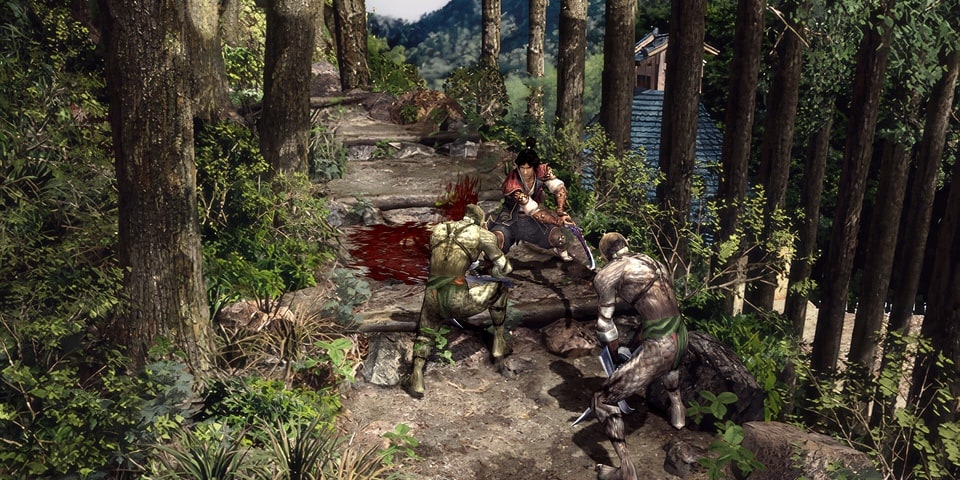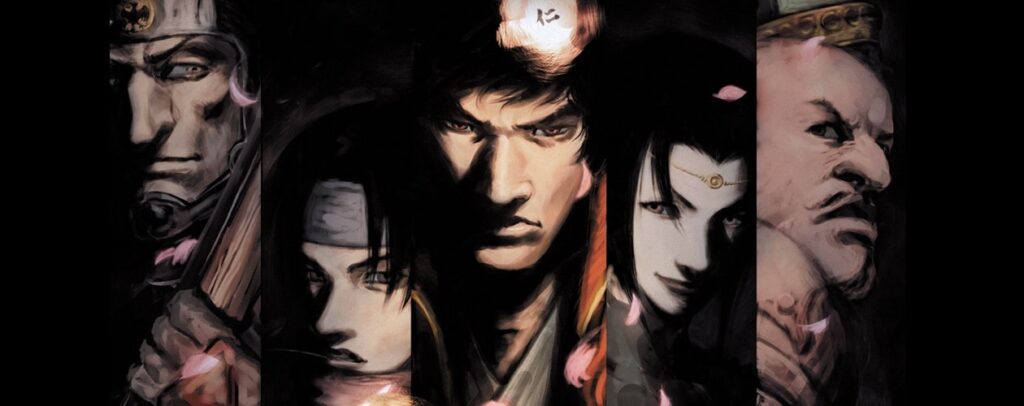I’m sad to say it, but Onimusha 2: Samurai’s Destiny has not aged well. I remember being blown away when I originally played the game on my humble PS2 back in the day. The smooth and silky combat, the responsive controls, the larger-than-life characters, and visuals that seemed photorealistic at the time. Indeed, I remember thinking as I hacked apart my umpteenth demonic foe, “How can video game graphics possibly get better any than this?” Well, they did. And action-adventure games got a lot better too.
For those who never played Onimusha 2: Samurai’s Destiny – perhaps you weren’t even born at the time? – allow me to give you the notes. This is a third-person action-adventure game and, in some ways, provides the original blueprint for so many of the action games we love today. Set in medieval Japan, you play as Jubei Yagya, a dashingly handsome samurai who is on a quest of vengeance. You see, Jubei’s entire village and clan were hacked to pieces by the villainous Nobunaga Oda. This real-life daimyō from the Sengoku period of Japan is cast here as a demonic warlord, one who will stop at nothing to crush Japan beneath his clawed fist. What follows is lots of hacking, slashing, boss fights, and puzzle solving, as Jubei and his Ninja pals seek to save the day.

The first thing you’ll notice upon starting up the game is that there is no independent camera operated by the player to see their surroundings here. Indeed, the game is strictly played from fixed-camera angles, just like the Resident Evil games that proceeded it. Frankly, I hated the restricted viewpoints back then and I hate them even more now. It’s just so easy to get lost and turned around, going back on yourself all the time, particularly when the direction controls are briefly reversed upon entering a new screen. Combat is clunky and messy as a result. It’s hard to gauge the distance of attacks and to even manage to hit the hideous beast stood right in front of you; all this serves to undermine the precision that’s required to successfully parry and counterattack.
This, of course, was one of the big innovations of Onimusha 2. Rather than the button-mashing madness of Dante in Devil May Cry, Jubei was intended to be a far more patient and thoughtful combatant, waiting for just the right moment to knock aside the blow from an undead samurai before following up with a potent combo or two. At the time, this gameplay innovation was spectacular. And now? Well, it’s the exact same video game combat you’ve been undertaking for the last few decades, only not as refined. Sure, the combat might now be moving along at a punchy 60fps, but it’s still pretty simplistic, so unless you have particularly fond memories of playing the game in the early noughties, you’re hardly going to be blown away. In fact, you might just wonder what all the fuss what about.
There’s been some other tweaks made for a modern audience, such as the ability to switch between weapons with the tap of a button, or – thank Capcom – being able to use a 360-degree analogue control rather than the awful classic tank controls. A new Hell mode is there for those who want an extreme challenge, and various minigames and costumes are unlocked from the off as well. Visually things have been sharpened up, but this is simply an HD polish of the PS2 graphics. They’re good for the era, but there’s none of the substantial visual upgrade that accompanied the recent remake of Ninja Gaiden 2 Black. Though the new digital soundtrack of the original tracks is a lovely nostalgic listen for the old lugholes.
As a game to play in 2025 then, Onimusha 2: Samurai’s Destiny is lacklustre at best. Where it could have delivered is in being a cultural artifact of an incredibly influential game. There are just over one hundred sketches by the game’s character designer, Keita Amemiya, to be enjoyed. This behind-the-scenes peek is fascinating and tremendously interesting. It’s something I wish Capcom had leaned more into. Rather than treating this remake of Onimusha 2: Samurai’s Destiny as being a game simply to play, they could have instead turned it into something akin to the special features on the Blu-ray of a classic film. Commentaries from the developers, explainers from talking heads, insight from fans, original notes and designs, all of these elements would have made for a fascinating re-release and a suitably comprehensive presentation for such an iconic game. As it is, this is a ho-hum remaster that, while it’s welcome to have, feels like a hurried attempt to drum up interest for the upcoming release of Onimusha: Way of the Sword.
